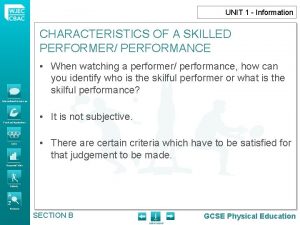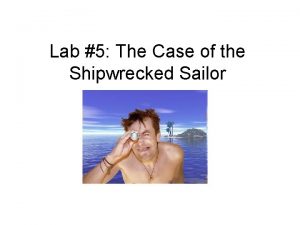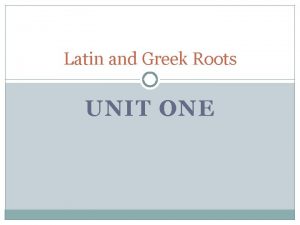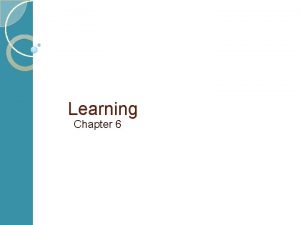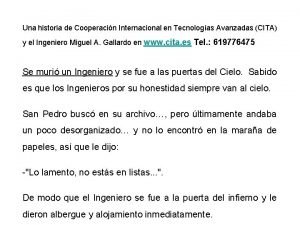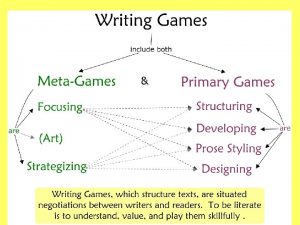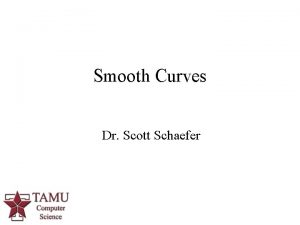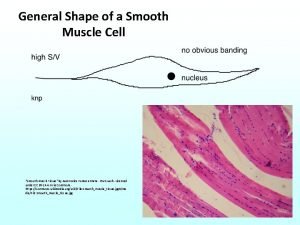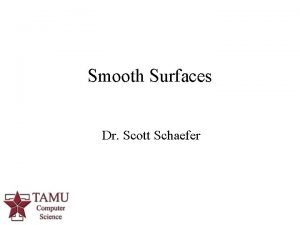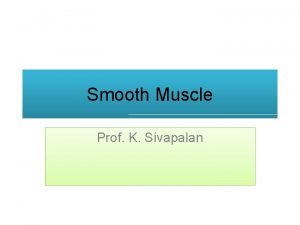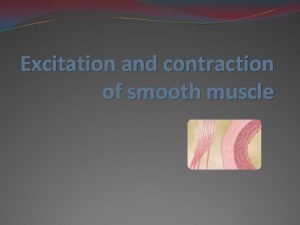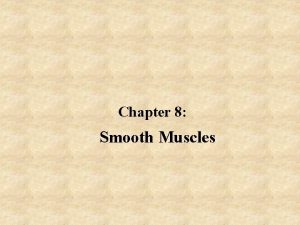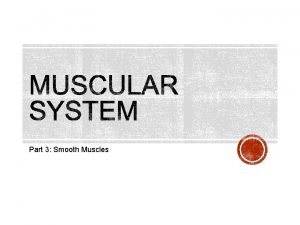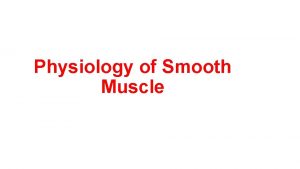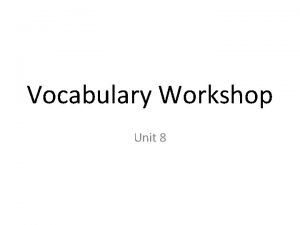LIFE Smooth seas do not make skillful sailors






























- Slides: 30

LIFE “Smooth seas do not make skillful sailors. ” -African proverb

DISEASES OF THE ADRENAL GLANDS CUSHING’S DISEASE (_____________) ADDISON’S DISEASE (_____________)

Adrenal Glands

ADRENAL GLANDS mineralocorticoids Glucocorticoids Androgens Epinephrine Norepinephrine

Physiology • Hypothalamus – Corticotropin realeasing factor (CRF) >>> _________________________(ACTH) – >>> ADRENAL CORTEX • _________________ hormone • __________ (Androgens) • SNS >>> ADRENAL MEDULLA >>> _______ and __________ – Increase HR, Inc. BP, Dilated air passages – lungs, dec. GI function, vasoconstriction

Hormone Functions Mineralocorticoids – _____________ • Regulates electrolyte and H 2 O balance • Hypoadrenocorticism/ ____________ • Primarily Dogs • ____________________ Glucocorticoids • Promote_________________ • Suppress inflammation • Suppress immune system • Inhibit cartilage growth and development • Hyperadrenocorticism / _____________

Hyperadrenocorticism (Cushings Disease) • Definition: Disorder caused by deleterious effects of ____________ circulating cortisol concentrations on multiple organ systems • Systems affected: Pansystemic disease – – – – Renal Skin Cardiovascular Respiratory Endocrine/metabolic Musculoskeletal Nervous Reproductive

Cushing’s Disease Effects of excess glucocorticoids: 1. 2. 3. __________ inflammation __________ immune system __________ cartilage growth, development, and repair Causes: 1. 2. 3. ______________ (pituitary-dependent disease) – 85% of cases ______________ (excess cortisol secretion independent of pituitary control) – 15 -20% of cases Overmedication with glucocorticoids -________

Cushing’s Disease

Cushing’s Disease ______________, pot-belly, pyoderma

Cushing’s Disease Pot bellied PU/PD Muscle wasting Thin coat

Cushing’s Disease • signs are slow to develop and usually go unnoticed by owner Clinical Signs: 1. Some are similar to hypothyroidism 2. Dog >6 yr old (most are female) 3. PU/PD/PP 4. Pot bellied; obese 5. Muscle atrophy and weakness, lethargy, excess panting 6. Bilateral symmetric alopecia; pruritis; pyoderma (↓ immune response) 7. __________ (firm plaques of Ca++ under skin) 8. Abnormal gonadal function (lack of estrus; soft, small testicles)

Cushing’s Disease: Calcinosis cutis Commonly seen on the dorsal midline, ventral abdomen and inguinal region. Skin is usually thin and atrophic

Cushing’s Disease: Dx Chemistry Panel 1. 2. 3. 4. ↑ _________, ____________, ________ ↓ BUN Lipemia ________ USG < 1. 015, proteinuria, hematuria, pyuria, bactiuria Urine cortisol/creatinine ratios (sample collected at home) 1. 2. Normal ratio=no Cushing’s Elevated ratio= _____ be Cushing’s ACTH Stimulation test 1. 2. 3. Normal patients show an increase of plasma cortisol Pituitary dependent disease (excess ACTH release) and Adrenal tumors: 6085% show ______________ cortisol response Does ____________ differentiate between Pit disease and Adrenal tumor

ACTH Stimulation for Hyperadrenocorticism • Take a pre blood sample. • Inject ACTH stimulation gel or liquid – Verify amounts with lab as there is difference between amount to be injected with gel and liquid. • Wait two hours and take a post sample

Cushing’s Disease: Dx Low-Dose Dexamethasone Suppression Test 1. 2. Inject low dose of steroid (should suppress ant. pit [ACTH]) Measure plasma cortisol at 0, 4, 8 h Interpretation: 1. 2. Normal dogs will show ________ in plasma cortisol Pituitary tumor and adrenal tumor will not show any effect at 8 h (cortisol will still be _________)

Cushing’s Disease: Dx High-Dose Dexamethasone Suppression Test (used to ___________ between Pit Dis and Adrenal tumor) 1. 2. Dosing: 0. 1 mg/kg IV Collect plasma cortisol at 0, 4, and 8 h Interpretation: 1. 2. Pituitary dependent disease— 70 -75% will show _________ at 4 or 8 h Adrenal tumor—_________ change in plasma cortisol level (tumor is autonomous)

Cushing’s Disease ACTH stimulation: Exaggerated response Low dose dex Normal: reduce Pit/Adr tumor: high High dose dex Pit: Decrease 4, 8 hrs Adrenal: No change

Cushing’s Disease: Rx ___________ removal— 1. 2. Specialized surgery; most vets would refer surgery Pituitary tumors are not surgically removed Medical treatment 1. Lysodren (o, p, DDD)—necrosis of z fasiculata (middle), z reticularis (deep) -repeat ACTH stimulation q 7 -10 d until cortisol normal -like chemotherapy -excess dose affects z glomerulus (___________)

Cushing’s Disease: Rx 2. trilostane (Vetoryl®)—less side-effects than o, p, DDD -interfers with cortisol production (doesn’t kill cells) -FDA approved

Cushing’s Disease: Client info • • Serious disease; life-long treatment Periodic monitoring required Addison’s disease may result (_________, __________) Prognosis: average life expectancy is 2030 mo on therapy with frequent recurrence of clinical symptoms – varies with cause (pit vs adrenal, tumors)

HARD TIMES “In the depths of winter, I finally learned that within me there lay an invincible summer. ” -Albert Camus

Addison’s Disease (Hypoadrenocorticism) • Definition: Disorder caused by _________ production of glucocorticoids (cortisol) or mineralocorticoids (aldosterone) or both • Secondary disease caused by chronic administration of ____________

Addison’s Disease (Hypoadrenocorticism) • • • Not as common as Cushing’s Disease; rarely seen in cats Deficiency of Glucocorticoids and Mineralocordicoids Clinical signs due to Mineralocorticoid (__________) deficiency Clinical Signs: 1. 2. 3. 4. lethargy, weakness, anorexia, wt loss Vomiting/Diarrhea PU/PD, dehydration _____________________

Addison’s Disease • Pathophysiology – Decreased aldosterone => Increased ____ and decreased _________ – => decreased volume =>________, hypotension, dehydration, weakness, depression – Hyper K => heart (__________) – Glucocorticoid deficiency => vomiting, diarrhea, melena, lethargy, wt loss, hypoglycemia (less common than expected)

Addison’s Disease: Dx Chem Panel Na: K ratio <__________ !!!(normal=27: 1 to 40: 1) ↑ BUN, Creatinine, Ca++ ↓ blood glucose, albumin (less common) ACTH Stimulation test (____________ test) normal dog= ↑ cortisol hypoadrenocorticism dog= ________ , unchanged cortisol level Endogenous ACTH will be increased (1º hypoadrenocorticism; lack of neg feedback)

What is your Dx? Chem Panel Parameter BUN Creatinine Sodium Potassium Na: K ratio (What is not normal? ) Value 81 mg/dl 2. 1 mg/dl 131 meq/L 6. 5 meq/L 20 Normal value 7 -27 mg/dl 0. 4 -1. 8 mg/dl 141 -156 meq/L 4. 0 -5. 6 meq/L 27 -40

What is your Dx? ACTH Stimulation Test Results Value Normal Plasma Cortisol Pre-ACTH 0. 2 2 -6 Post-ACTH 0. 3 6 -18

Addison’s Disease: Rx Acute Crisis (may be life-threatening situation) 1. 2. Normal saline IV (low _______ is hallmark finding of Addison’s) Glucorticoid replacement(cortisol will also be low) a. 3. Dexamethasone or Prednisone (IV or IM) Mineralocorcorticoid replacement a. b. __________ (fludrocortisone acetate)—po ___________-V (desoxycorticosterone pivalate) injection Chronic Management 1. Glucocorticoid replacement a. b. 2. Mineralocorcorticoid replacement a. b. 3. Prednisone Prenisolone Florinef® (fludrocortisone acetate)—po daily (not cheap; 50¢/tab) Percortin-V (desoxycorticosterone pivalate)—inj ~monthly (expensive) Monitor electrolytes, BUN/Creatinine, clinical signs

Addison’s disease: Client info 1. 2. 3. 4. 5. 6. Mineralocorticoid deficiency is life-threatening Animal requires periodic blood tests Glucocorticoids needed in times of stress Always remind attending vet of pet’s condition Hormone replacement therapy continued for life of pet Prognosis: Good to excellent after stabilization and treatment
 Smooth seas do not make skillful sailors
Smooth seas do not make skillful sailors Characteristics of skilled performers
Characteristics of skilled performers Skillful, expert in the use of the hands or mind
Skillful, expert in the use of the hands or mind Steering straight backward
Steering straight backward Flowers for algernon vocabulary
Flowers for algernon vocabulary Sadlier vocabulary workshop level d unit 1 synonyms
Sadlier vocabulary workshop level d unit 1 synonyms Who transforms odysseus’s sailors into pigs
Who transforms odysseus’s sailors into pigs Find the names of sailors who have reserved a red boat
Find the names of sailors who have reserved a red boat Why do sailors hate doldrums
Why do sailors hate doldrums A rainbow at night is the sailors delight
A rainbow at night is the sailors delight Acrostic poem about sailors
Acrostic poem about sailors Shipwrecked sailors case
Shipwrecked sailors case Vocabulary from latin and greek roots unit one
Vocabulary from latin and greek roots unit one The vikings were sailors came
The vikings were sailors came The astrolabe allowed sailors to
The astrolabe allowed sailors to Dylan's mother buys him a sailor's cap
Dylan's mother buys him a sailor's cap Null sid
Null sid Make the lie big make it simple
Make the lie big make it simple Go make a difference
Go make a difference Dawes plan
Dawes plan Minecraft not gate
Minecraft not gate To make someone believe something that is not true
To make someone believe something that is not true Who is katherine barchetti
Who is katherine barchetti Do not make friends with a hot tempered man
Do not make friends with a hot tempered man Measure what is measurable and make measurable what is not
Measure what is measurable and make measurable what is not No seas prepotente
No seas prepotente Seas application due date
Seas application due date La trobe seas calculator
La trobe seas calculator Seas library
Seas library Seas gaspriser
Seas gaspriser Amado mio deseo que seas prosperado
Amado mio deseo que seas prosperado

